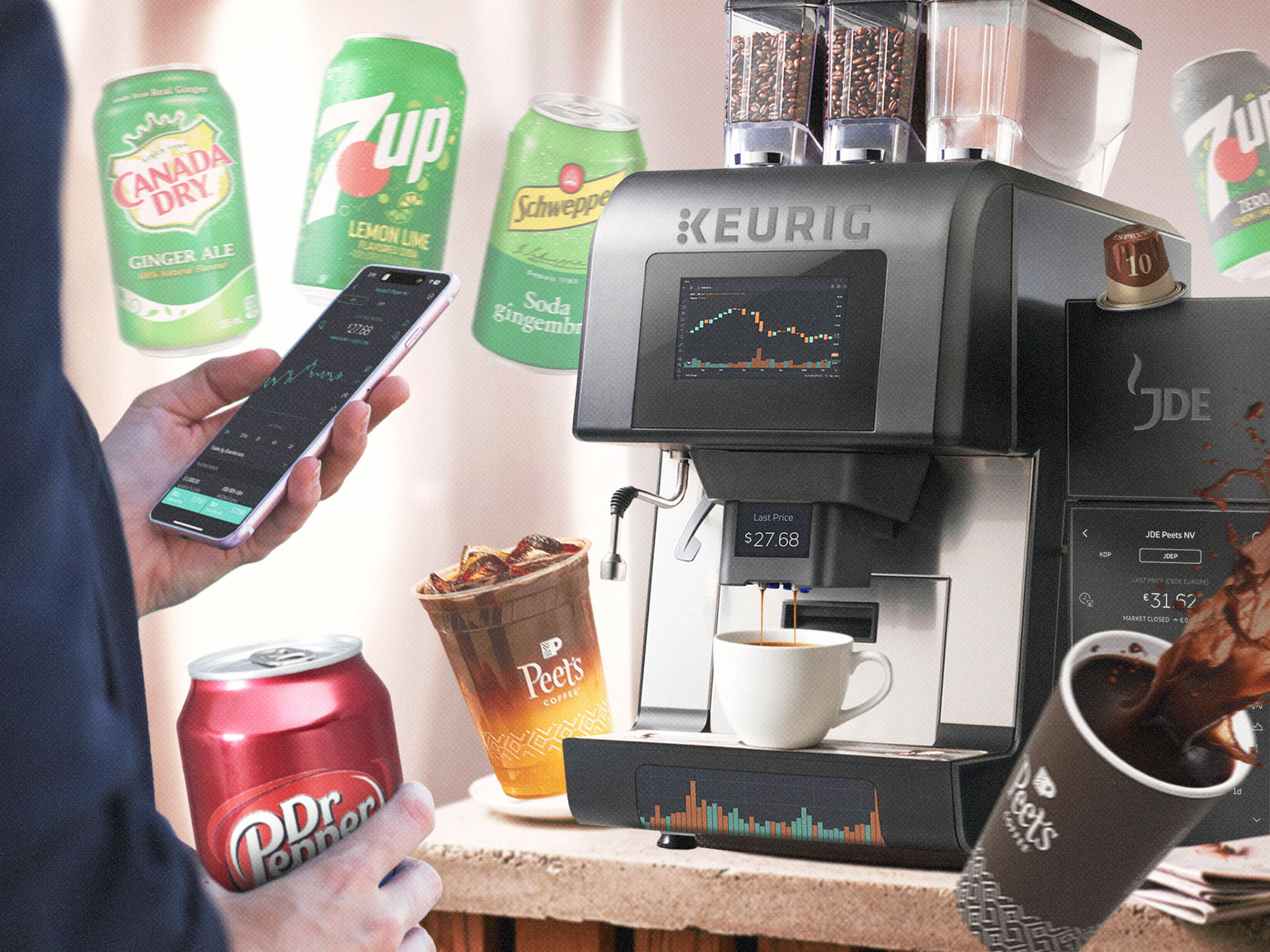Keurig Dr Pepper (NASDAQ: KDP), the coffee and soft drink company, is performing well in a difficult environment. But it may face speed bumps ahead.
The purveyor of Dr Pepper soda and Keurig coffee machines/pods has thrived thanks to innovation and a growing focus on premium water, energy and sports drinks. It has overcome tariffs, economic uncertainty and more health-conscious consumers.
KDP’s revenue jumped 10.7% in the third quarter to $4.3 billion. Profit climbed 7.5% to $662 million. U.S. refreshments (soda and other drinks) account for 63% of the company’s revenue, and U.S. coffee accounts for 23%. (International sales make up the rest).
Refreshments far outperformed coffee, with a revenue gain of 14.4%, compared to 1.5% for coffee. Refreshments also include 7UP and Canada Dry, while coffee includes Green Mountain Coffee Roasters.
Meanwhile, Keurig Dr Pepper raised its estimate for full-year 2025 revenue growth to high-single-digit percentage points from mid-single-digits.
Capital infusion from big players
Along with its earnings, the company announced it’s receiving $7 billion in combined investments from top financial firms. Private equity titans Apollo Global Management (NYSE: APO) and KKR (NYSE: KKR) are slated to invest $3 billion in the refreshment division. Also, the duo and investment bank Goldman Sachs (NYSE: GS) will allocate $4 billion to a joint venture that will offer coffee pods.
The capital infusions will help limit KDP’s debt burden as it executes its agreed acquisition of JDE Peet’s (CBOE: JDEP), owner of Peet’s Coffee, for $18 billion. Then it plans to split off the slower growing coffee unit from the refreshment unit.
KDP shares soared 8% the day it announced its earnings and the $7 billion investments (Monday), though they’re still down 15% for the last 12 months.
But the capital infusions may not be as good as they look. Investors were concerned about the amount of debt KDP would need to buy Peet’s. The infusions are structured so as to avoid putting debt on KDP’s balance sheet.
The Peet’s acquisition initially was expected to increase Keurig’s debt to $38 billion, including an $18.9 billion bridge loan made to Keurig from Morgan Stanley when the deal was announced. But with the new $7 billion of financing, Keurig expects only $31 billion of debt. The $7 billion won’t appear on Keurig’s balance sheet.
Off-balance sheet risk
That may help KDP’s ratings with Moody’s and S&P. But off-balance sheet borrowing can cause major problems for debtor companies, as it can encourage them to amass excess debt. That won’t necessarily happen to KDP, but it’s a risk.
In any case, some experts aren’t too high on the merger. “More effective innovation and better marketing are needed to lift KDP-Peet’s coffee outlook amid competition and cost inflation,” wrote Morningstar analyst Dan Su.
“Given challenges for KDP and Peet’s to boost demand in the past three years, coupled with integration complexity, we don’t expect volumes to grow materially in the next few years.”
To be sure, he’s more optimistic on the refreshment side. “Brand affinity built around distinct taste, recipe reformulation, and innovation to meet evolving consumer preferences should enable the firm to maintain a lead in its specialty categories,” Su said. “This should afford continued pricing power even amid secular headwinds driven by consumer health concerns.”
Maybe the capital infusion and split-up after a merger with Peet’s will provide a positive long-term jolt for KDP, but that’s no slam dunk.




Comments